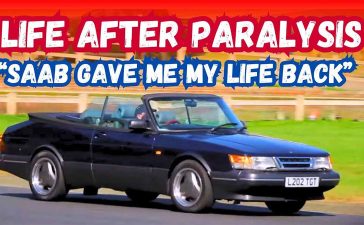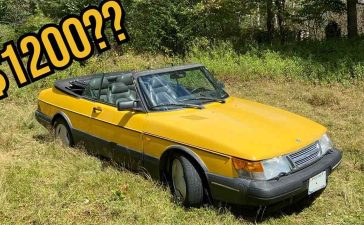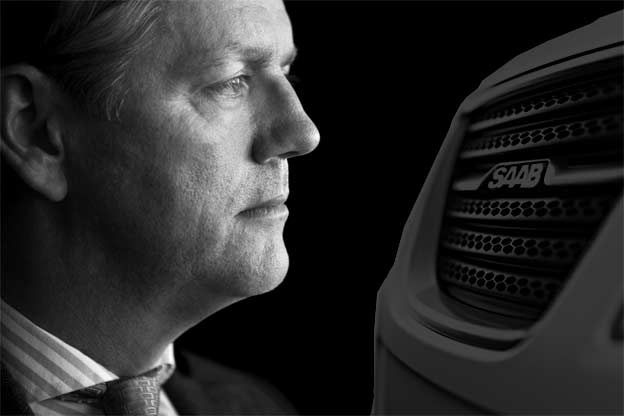When timeless design, turbo power, and ergonomic brilliance align, even skeptics can’t stay indifferent.
A Saab skeptic meets a Swedish icon
Steph Hoy, known for her YouTube channel idriveaclassic, usually ventures into the world of postwar British and European classics. Her latest review, however, took an unexpected turn as she found herself behind the wheel of an iconic 1988 Saab 900 Turbo Convertible — a car she admittedly never had on her radar. The twist? She didn’t just like it; she was energized by it.
Hoy’s initial ambivalence is what makes this encounter particularly revealing. Saab, a marque long appreciated by engineers, thinkers, and enthusiasts, rarely gets reviewed by someone entirely outside its cult. But her reaction illustrates what many of us already know: a classic Saab doesn’t ask for your affection – it earns it.
“This is very, very fun,” she says mid-drive. “It brings you to life.”
An introduction to the 900 Convertible: Form meets function
The Saab 900 Convertible launched in 1986, building on the solid foundation of the Saab 99 chassis. By the time Steph gets her hands on this 1988 model, Saab had perfected the formula: aerodynamic lines, robust build quality, and a turbocharged heart.
Powered by a 2.0L 16-valve turbocharged H-engine, it develops 145 horsepower, taking it from 0 to 60 mph in around 9 seconds. But numbers only tell part of the story. As Hoy points out, the 900 Convertible feels alive in a way that transcends raw performance.
“From the moment you turn the key, the car wants to go,” she explains. The manual 5-speed gearbox further enhances the experience, offering satisfying shifts and amplifying the driver’s connection with the car.
Safety and intelligence: A cockpit built for humans
One of Hoy’s biggest revelations came when she began to understand the Saab dashboard. Saab, with its aerospace roots, engineered the 900’s interior around driver behavior. Important controls, like the radio and heater, are placed high within the driver’s natural line of sight.
“They designed this with your eyes on the road, not fumbling around below,” she notes.
Even mirror adjustments can be made without leaning across the cabin, and the layout avoids the unnecessary complexity common in many modern cars.
The infamous Saab ignition located between the seats — which requires the car to be in reverse to remove the key — was seen not as a quirk but a deliberate safety measure. These insights, for someone unfamiliar with the brand, underscore just how advanced Saab was in prioritizing human-centered design decades before it became industry buzz.
Timeless quality that holds up under scrutiny
Steph’s test vehicle had over 130,000 miles on the clock. Despite this, she was impressed by the condition of high-touch surfaces like the steering wheel, seats, and switches.
“You’d think the seats would show more wear. But they haven’t,” she says, running her hand across the leather. Her verdict? “It wears its age very well.”
This is testament to Saab’s legendary build quality. The 900 was never designed as a throwaway car. Materials were chosen for longevity, not cost-cutting. Even the tactile quality of the stalks and switches reinforced this.
Visibility, ergonomics, and driving joy
Once on the road, Steph noticed something often overlooked in today’s vehicles: excellent visibility. Thin pillars, a well-positioned seating layout, and a gently curved windshield combine for an experience that feels safe and confident.
“I got into it and I’ve got unrivaled visibility for a car of this era. It’s blooming fantastic,” she says.
Then there’s the turbo. Hoy was advised the boost would kick in around 3,000 RPM, and when it did, she laughed out loud. That spontaneous moment of joy summarizes the Saab 900 experience: practical when you need it, and thrilling when you least expect it.
What does a non-Saab person notice?
This is the question at the core of the video. Someone with no prior attachment to Saab notices the following:
- Ergonomics and dash layout
- Build quality and durability
- Driving dynamics that still hold up
- A distinctive approach to safety
- Usability and simplicity over visual drama
This contrasts with typical enthusiast reviews, which often assume an insider vocabulary. Hoy’s perspective is fresh because it acknowledges Saab’s greatness from the outside in. In doing so, she unintentionally validates everything Saab owners already know.
A female voice in a male-dominated genre
It’s worth mentioning the significance of having a female presenter give such an insightful take. Steph Hoy’s calm, articulate demeanor and analytical eye cut through the usual gearhead bravado.
Her perspective is inclusive, appealing to anyone considering their first classic, not just those already immersed in turbo lag or transmission codes. And that inclusivity might be exactly what Saab needs in its legacy era.
Is the Saab 900 Turbo Convertible a good buy today?
Steph ends with a practical note: If you’re looking for an affordable, safe, fun, and usable classic, this might be your answer.
Even today, it’s possible to find well-kept Saab 900s — especially hardtops — for under £3,000 in the UK (about $3,800 USD). For a car that offers genuine driving engagement, a unique design, and one of the safest reputations of its era, that’s compelling.
The gearbox may be a little notchy in second. The seatbelt might squeak. But these are small prices to pay for a car that delivers so much character and confidence.
When design integrity stands the test of time
The Saab 900 Turbo Convertible didn’t just surprise Steph — it converted her. Her review is more than a thumbs-up. It’s a case study in how a car, built with intelligence and integrity, can still impress three decades later, even when viewed through modern eyes.
It’s proof that when the essence of a car is good, it doesn’t fade. And when presented through the lens of someone with no preconceived Saab bias, that essence shines even brighter.
If Saab ever had a PR department again, they’d do well to use this video as a reintroduction.
Related Reading:
- The Saab 900 Buyer’s Guide
- How Saab Built a Safety Legacy
- Why the 900 Turbo Still Feels Modern Today












2 points: 900 Cabriolet – Finnish Icon – every 900 and OG9-3 cabrio was made in Finland. Second the 2-litre 16V turbo was 175ps, you could get low pressure turbo versions with 145PS but she drove a 175PS version. Same engine as T16S/Aero/SPG but no body kit.
One detail she got wrong was that the non-16 valve engines were B-series and 16-valve engines were H-series….H-type was introduced in 1980 for 900 1981 MY and in the 99 for 1982 MY. That was ‘B201’. The 16-valve engine was B202.
Well – you need to use the safety belts or you could easily be blown away in a SAAB cab at full speed – hope she wasn´t injuried and that you found her agin…